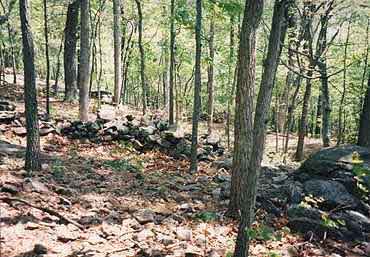To
the Rescue or All is Lost! by Joshua Lawrence Chamberlain Now
as an important element of the situation, let our thought
turn to what was going on meanwhile to the right of us.
When Warren saw us started for Little Round Top, looking
still intently down, he saw Hood's two brigades breaking
past the Third Corps' left and sweeping straight for
Little Round Top. Then he flew down to bring
reinforcement for this vital place and moment. He came
upon the One Hundred and Fortieth New York, of Weed's
Brigade of our Second Division, just going into Sickles'
relief, and dispatched it headlong for Round Top. Weed
was to follow, and Ayres' whole division—but not
yet. Warren also laid hold of Hazlett, with his battery,
D of the Fifth Regulars, and sent him to scale those
heights—if in the power of man so to master nature.
Meantime the tremendous blow of the Fourth and Fifth
Texas struck the right of our brigade, and our Sixteenth
Michigan reeled and staggered back under the shock.
Confusion followed. Vincent felt that all was lost,
unless the very gods should intervene. Sword aloft and
face aflame, he rushed in among the broken companies in
desperate effort to rally them, man by man. By sheer
force of his superb personality he restored a portion of
his line, and was urging up the rest. "Don't yield
an inch now, men, or all is lost!" he cried, when an
answering volley scorched the very faces of the men, and
Vincent's soul went up in a chariot of fire. In that
agonizing moment came tearing up the One Hundred and
Fortieth New York, gallant O'Rorke at the head. Not
waiting to load a musket or form a line, they sprang
forward into that turmoil. Met by a withering volley that
killed its fine young colonel and laid low many of his
intrepid officers and a hundred of his men, this splendid
regiment, as by a providence we may well call divine,
saved us all in that moment of threatened doom.
Index to Chamberlain's Pages
Copyright © 2001 - 2009 1st Dragoon's Civil War Site. All rights reserved. |
||||||

